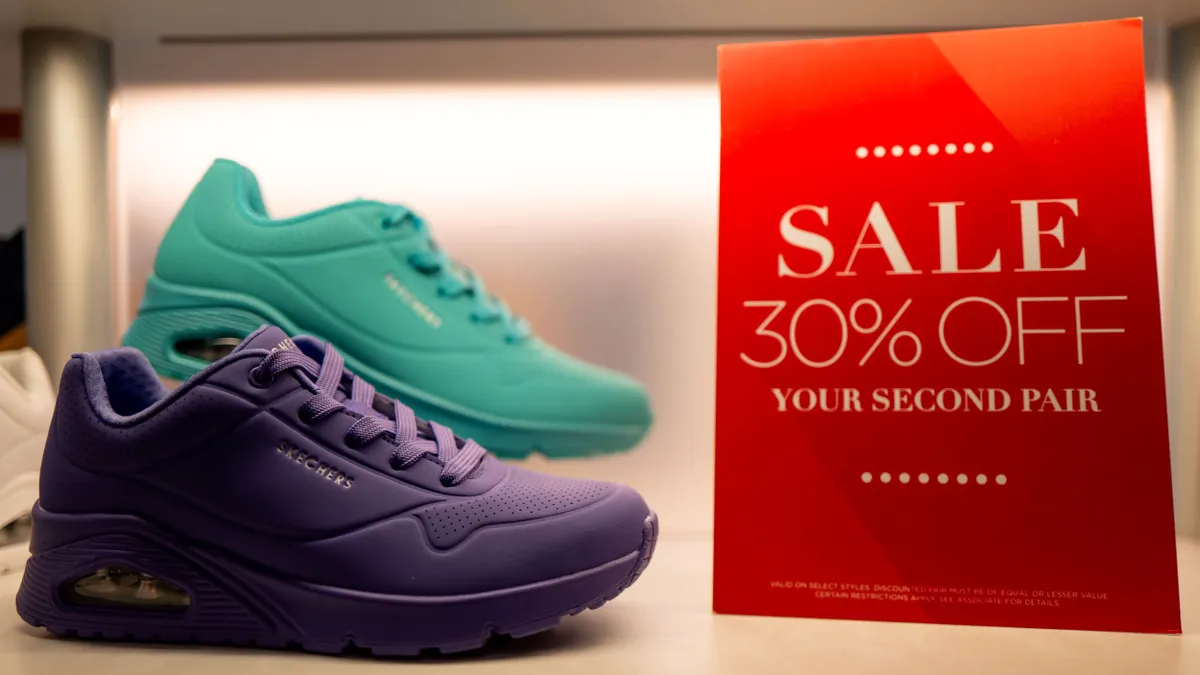Once key players in a fast fashion boom, Shein and Temu are now seeing customers buy clothing elsewhere online.
Heightened tariffs on China and changes to the de minimis provision have added complications to the strategy that made Shein and Temu attractive to budget conscious customers: utilizing a China-based supply chain and sending small packages to avoid additional import duties.
U.S. President Donald Trump’s Liberation Day tariffs, imposed in early April, shook consumer spending. Shein and Temu both announced they had to raise their prices to account for the impact, before later walking back their price increases.
Consumer spending at Shein and Temu fell more than 10% and 20%, respectively, during the week ending on May 11, according to data from Consumer Edge. In the weeks since then, neither brand has mounted a significant comeback, according to Michael Gunther, vice president and head of insights for Consumer Edge.
While both companies had already seen a spending slowdown in 2025, there was a sharp drop off in the face of April’s tariff announcements, according to data aggregation company Similarweb.
Since the tariff announcements, consumers’ shopping patterns have quickly shifted, per Similarweb data. Some companies experience short-lived surges, such as at e-commerce companies including TikTok Shop and DHgate. Meanwhile, more established players Shein and Temu are left experiencing long-term shifts.
“In the U.S., we’re going to see some rebalance, and I don’t think we’re going to see the levels [of spending on Shein and Temu] that we saw previously with these players,” Ben Parkes, advisory services for consumer goods and retail at Similarweb, said of Shein and Temu.
Against this backdrop, Amazon has stood out as a key player that may stand to benefit from U.S. consumers changing where they shop for fast fashion.
“I think we’re going to see a spike on some of these Amazon players who already had a presence, but now they’re kind of beefing up that area,” Parkes said.
Over the last six months, the women’s clothing category on Amazon grew more than 26%, per Similarweb data. Three out of the five top brands in the category are China-based third-party sellers that utilize Amazon’s fulfillment network, per Similarweb data. A vast majority (92%) of women’s clothing on Amazon is from third-party sellers.
Men’s clothing on Amazon doesn’t have the same statistics. In the last six months, the men’s category grew just 4%, and none of its top brands are China-based third-party sellers, per Similarweb. Third-party sellers make up 57% of the category.
“In the long term, who knows where they’ll go, but right now, we’re seeing a shift toward Amazon for women’s clothing,” Parkes said.
The e-commerce giant recently extended its annual Prime Day sales event from two days to four. While Amazon didn’t state its explicit reason for the change, the company could see it as an opportunity to capitalize on the current weakness of Shein and Temu, according to Gunther.
“Maybe they’re trying to take advantage of this situation here,” Gunther said. “I can’t imagine any of those companies are going to sit idle.”
But it’s not just Amazon benefitting from Temu and Shein’s lost market share.
Other fast fashion merchants, including Asos and Zara, saw a surge in spending from Temu and Shein customers, according to Consumer Edge data.
Discounter retailers such as Ollie’s Bargain Outlet also saw an increase in spending from Temu and Shein shoppers, along with athleticwear companies Columbia and Footlocker, per Consumer Edge. Department stores such as Bloomingdale’s and Nordstrom Rack also gained share, as well as young adult clothing brands Aeropostale and American Eagle.
How are Shein and Temu responding to a U.S. slowdown?
Further down the line, Parkes expects companies like Temu to start building out their supply chain in the U.S., he said.
“The biggest change we’re going to see in U.S. fashion is the supply chain,” Parkes said. “If you think about how [Shein and Temu] operated previously, with the de minimis situation, they were reliant on sending in smaller parcels and that is now something that becomes a challenge.”
Temu announced its intention to localize its supply chain when it walked back its previously announced tariff-related price increases, which it attributed to shifting to a local fulfillment model.
In the meantime, however, both Shein and Temu may have shifted their marketing spending to countries outside the U.S.
During the first three weeks of May, Temu sales jumped more than 60% in the EU, compared to 40% to 50% in March and April, according to Consumer Edge.
Broken down by individual country, France saw the largest increase with nearly more than 100% growth from April to May, per the data, which said this could be due to increased ad spending in the country.
For Shein, EU sales were up nearly 20% in May, compared to low double-digit growth in April, per Consumer Edge data. Sales growth in the U.K. was nearly 50% year over year.
“Both companies were trying to make a concerted effort to diversify geographically, perhaps in preparation for trade tensions to increase,” Gunther said. “But those gains seem to have either remained steadily positive or accelerated. I think a lot of this is going to depend on what the regulatory environment looks like [in Europe].”
However, the U.S. is still a much more important market for them.
“If you’re seeing big increases in Europe and big decreases in the U.S… that’s not [net] positive for them,” Gunther said.



















